Mawphlang Sacred Groves
Khasis are known to have a very close affinity towards nature. They consider forests as an abode of gods, a game sanctuary, and a beloved home all rolled into one.
In the words of H.O. Mawrie,
'U khasi U im bad ka mariang, bd ka mariang ka im bad U', which translates to 'A Khasi lives with nature and nature lives with Khasi'.
In the local parlance, land is referred to as 'Ri' and is considered a 'Gift of nature' bestowed upon the Khasis community, of which Sacred Groves hold a specific mention in their religion and way of life.
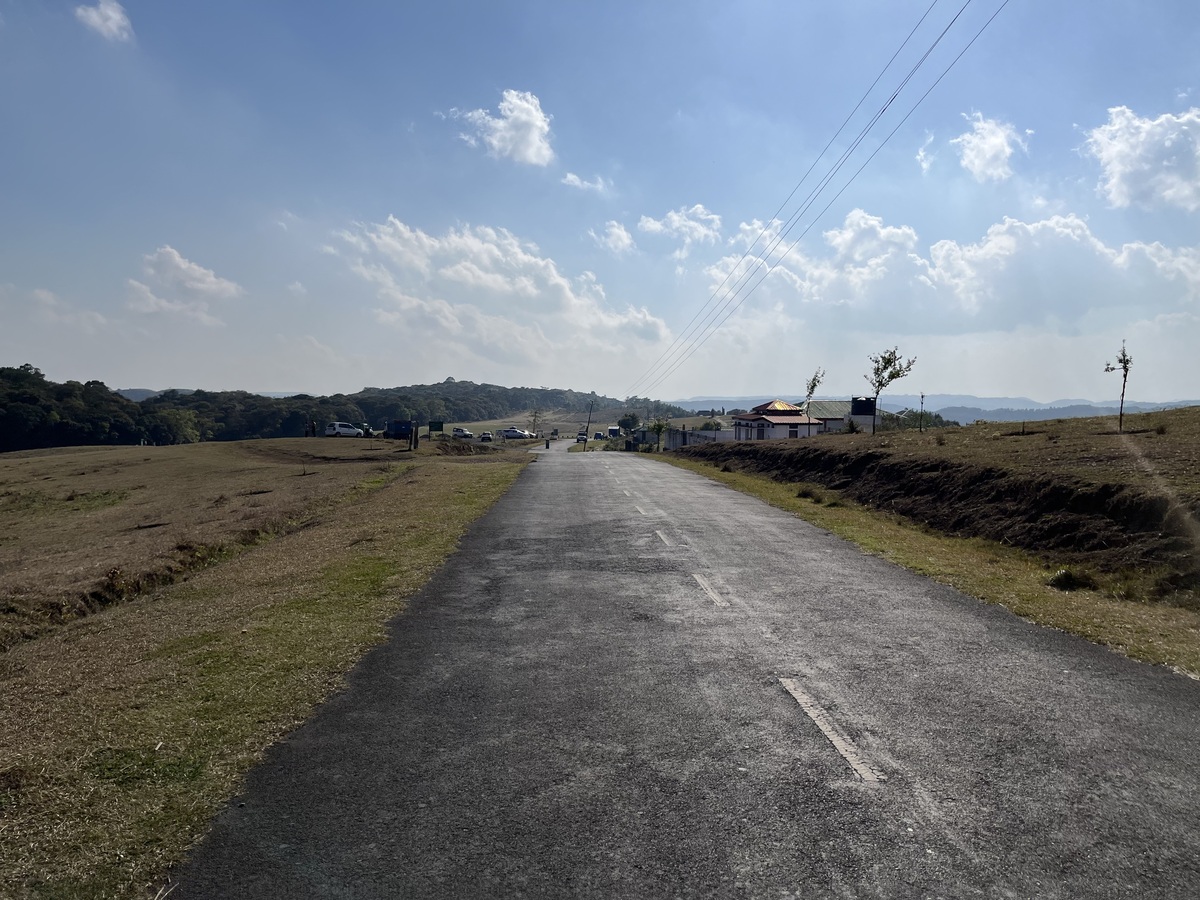 On the way to Mawphlang Grove entrance, near the parking spot.
On the way to Mawphlang Grove entrance, near the parking spot.
Picture credit: @aryan
Creation
According to legend, the Mawphlang Sacred Grove was created by a Khasi god known as "Labasa, Basa, or Ryngkew", who resides in this sacred forest and serves as a guardian spirit of the village and surrounding forests, protecting the local Khasi tribes.
Synergy: There are similarities here that can be observed with "Panjurli Daiva", a local forest deity of Tulu clan in Karnataka, as depicted in the movie Kantara.
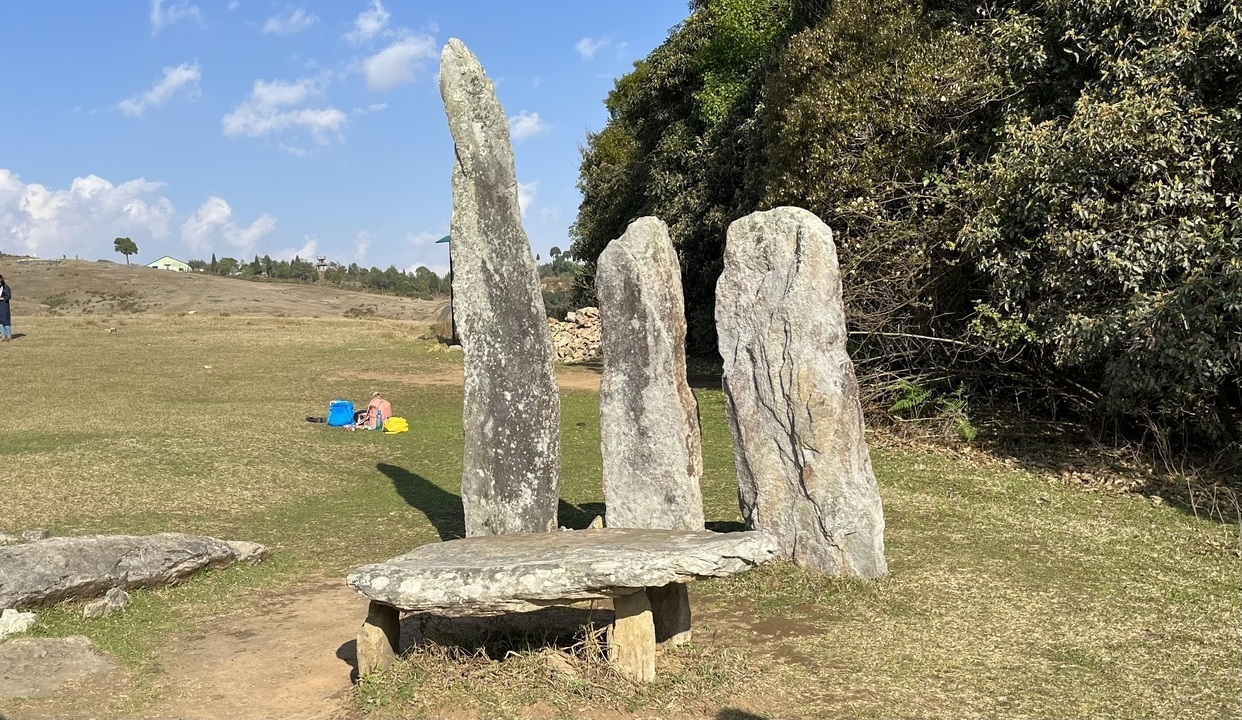 Monoliths at the entrance of Mawphlang sacred grove.
Monoliths at the entrance of Mawphlang sacred grove.
Picture credit: @aryan
Folklore
The Basa comes in two forms: Snake and Tiger. If a person goes into the grove to do anything destructive, the Basa appears as a snake and scares them.
The Base manifests in the form of a tiger, serving as the guardian of the innocent people. When those near the grove find themselves in danger, they cry out, "O No, O Kong, O Ryngkew, O Basa, please protect us from danger." Afterward, they can hear the roar of the tiger and feel its spiritual presence.
In these Sacred groves, not only is the cutting of trees forbidden, but also nothing can be taken out of them - not a fruit, nor a flower, not even a single leaf.
So, these sacred groves have remained untouched throughout their existence, in accordance with their inherent nature. Locals are allowed to eat fruit inside, but they are not permitted to bring anything outside. My guide, John, gave me a rudraksha tree fruit to eat inside, based on what I observed.
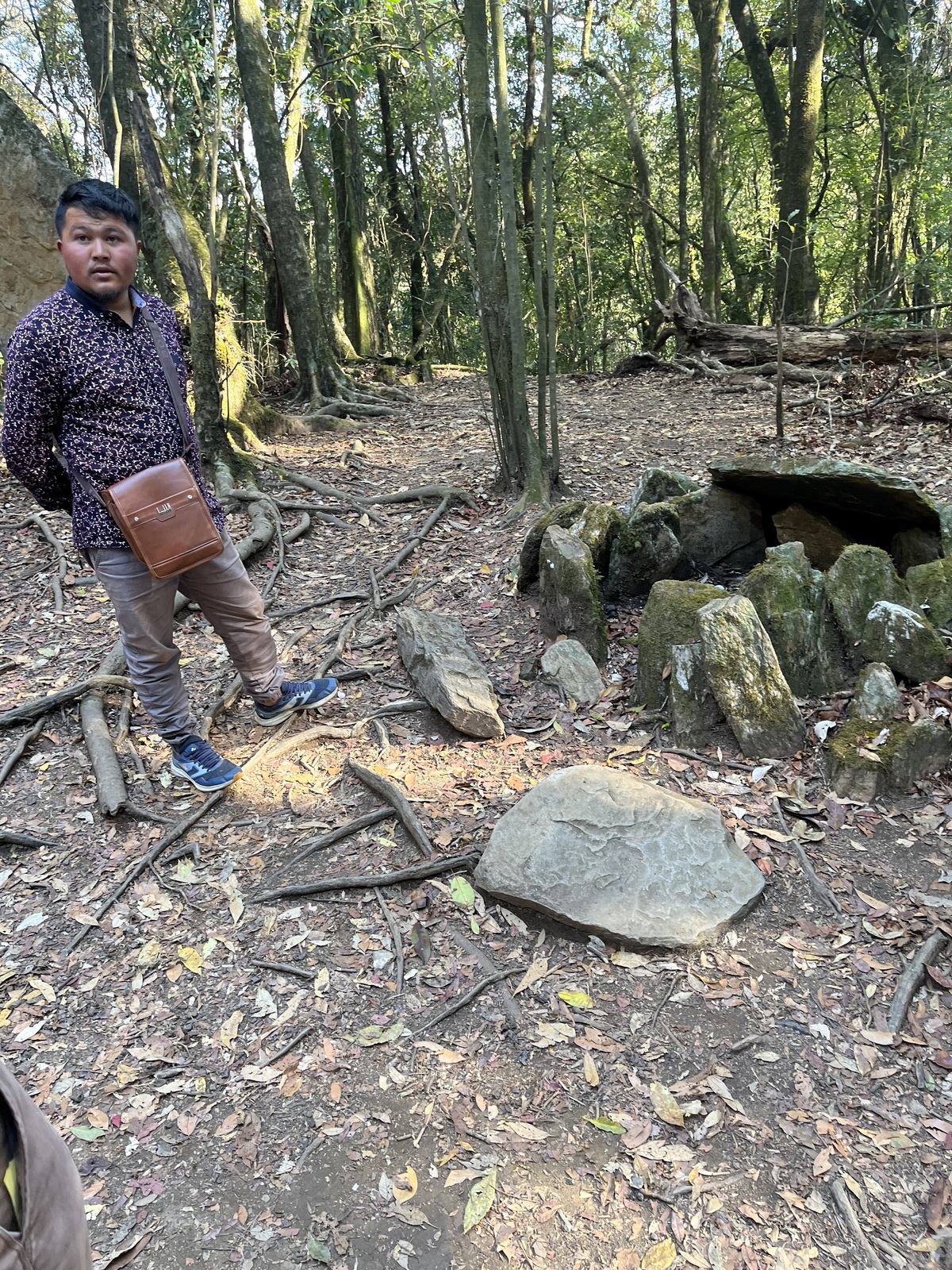 John, our guide, showing us the place of religious sacrifice inside a sacred grove.
John, our guide, showing us the place of religious sacrifice inside a sacred grove.
The last sacrifice was performed around 1952, and it has not been practiced since then.
Picture credit: @aryan
To showcase the richness and diversity of Mawphlang Sacred Groves, the forest boasts over 300 species of plants, 70 species of orchids, and other treasures. In the winter months, visitors may catch a glimpse of rare and endangered birds such as the Rufous-necked hornbill, Hoolock gibbon, and Slow Loris deep within the forest.
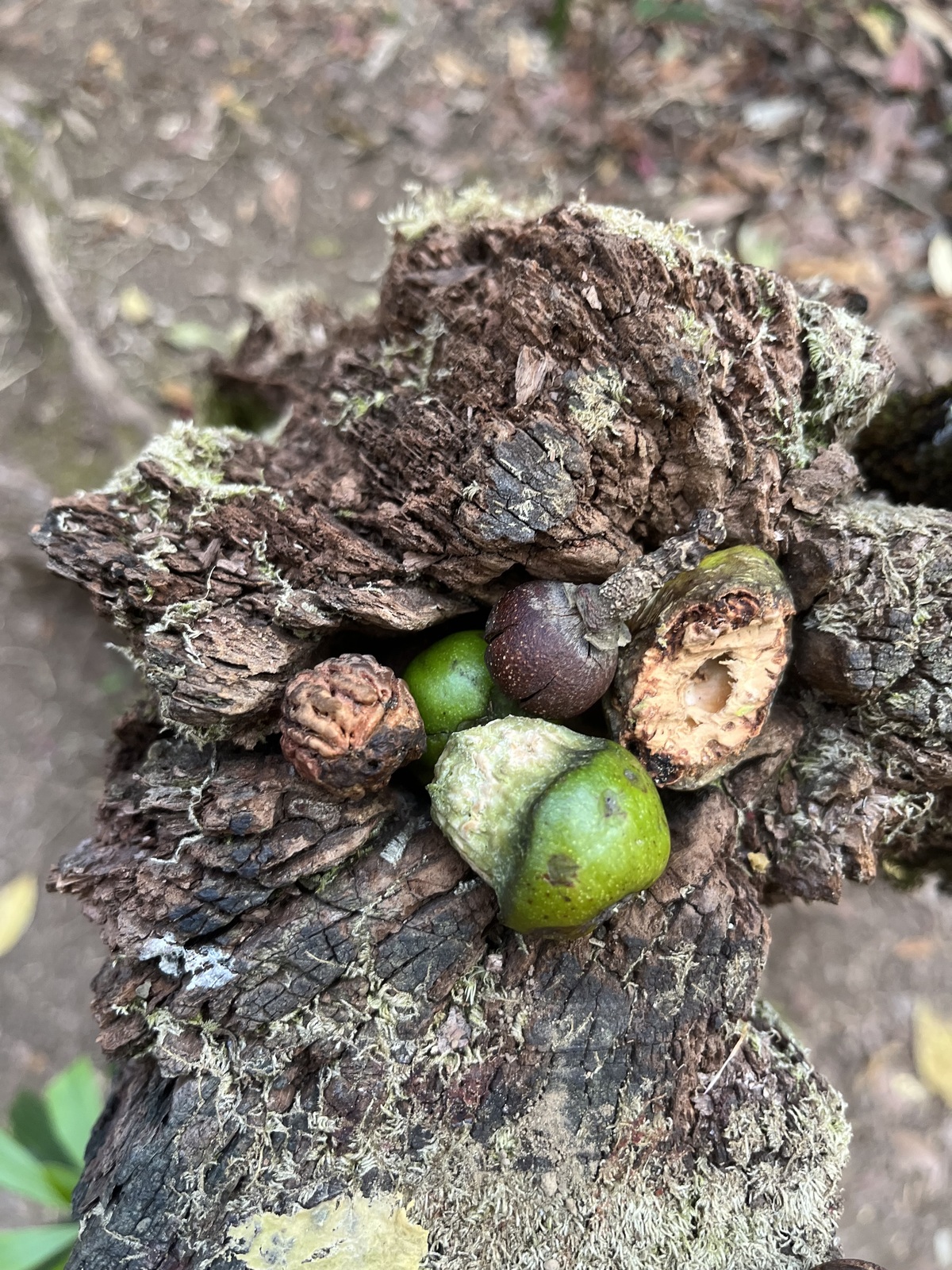 Rudraksh fruit inside a sacred grove.
Rudraksh fruit inside a sacred grove.
Picture credit: @aryan
David Scott trail
 Trek starting point at the top.
Trek starting point at the top.
Picture credit: @aryan
Located just 1 kilometer from the entrance of Mawphlang sacred groves, lies a historical trail created during the time of English officer David Scott, connecting Assam to present-day Bangladesh. The total length of the trail is around 100 kilometers, with approximately 16 kilometers passing through the Mawphlang area.
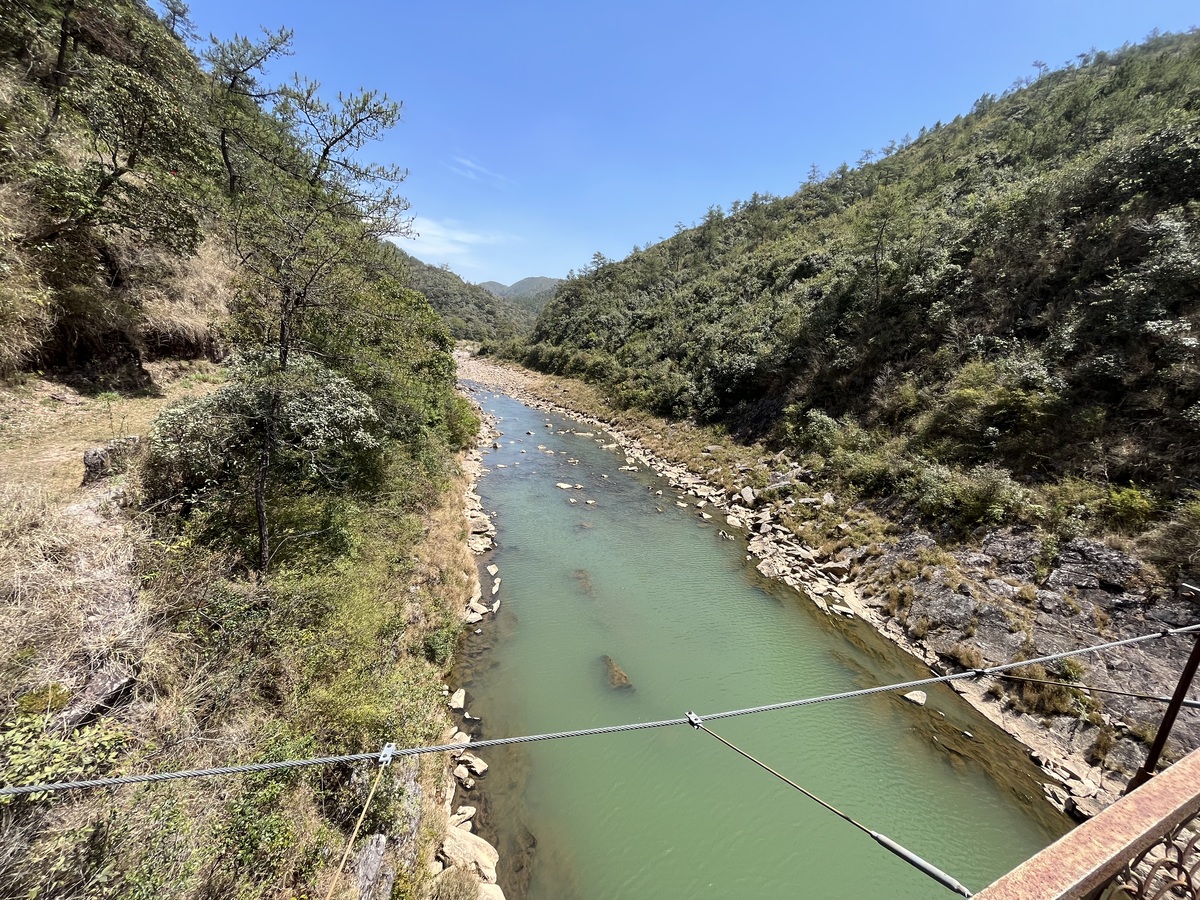 The stream of Umiam River flowing beneath the suspension bridge.
The stream of Umiam River flowing beneath the suspension bridge.
Picture credit: @aryan
It's a natural trail that runs alongside the Umiam River, passing under a military-built suspension bridge re-built around 2012. However, the condition of the suspension bridge was not good when we went, with multiple wood blocks coming out from the middle. We had to hold onto the side wire to safely pass through. It's an easy trek with beautiful views of the rainforest and the clear Umiam stream.
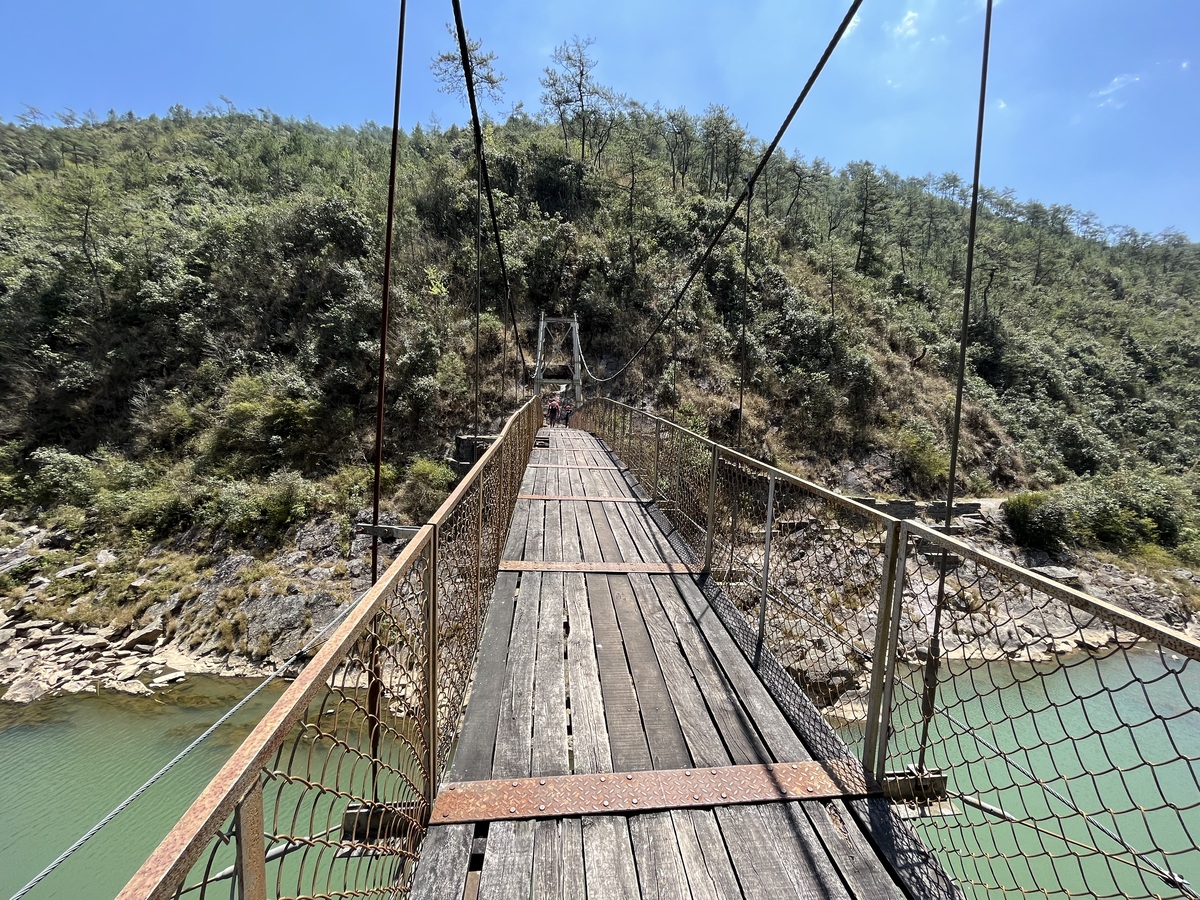 Suspension bridge with degraded wood blocks due to prolonged exposure to rain. Crossing it felt like a task straight out of the 'Khatron Ke Khiladi' show :cowboy_hat_face:
Suspension bridge with degraded wood blocks due to prolonged exposure to rain. Crossing it felt like a task straight out of the 'Khatron Ke Khiladi' show :cowboy_hat_face:
Picture credit: @aryan